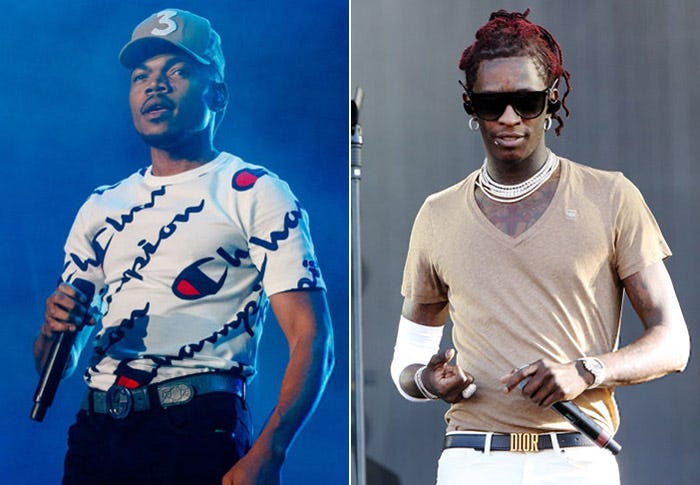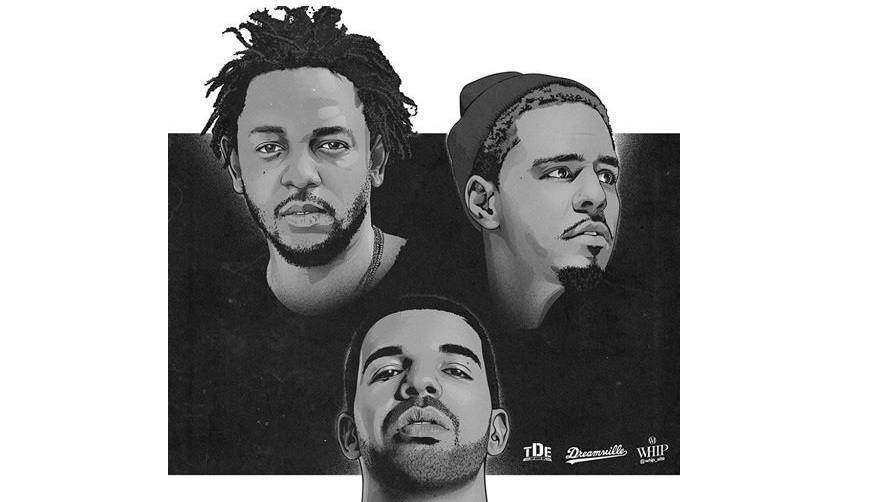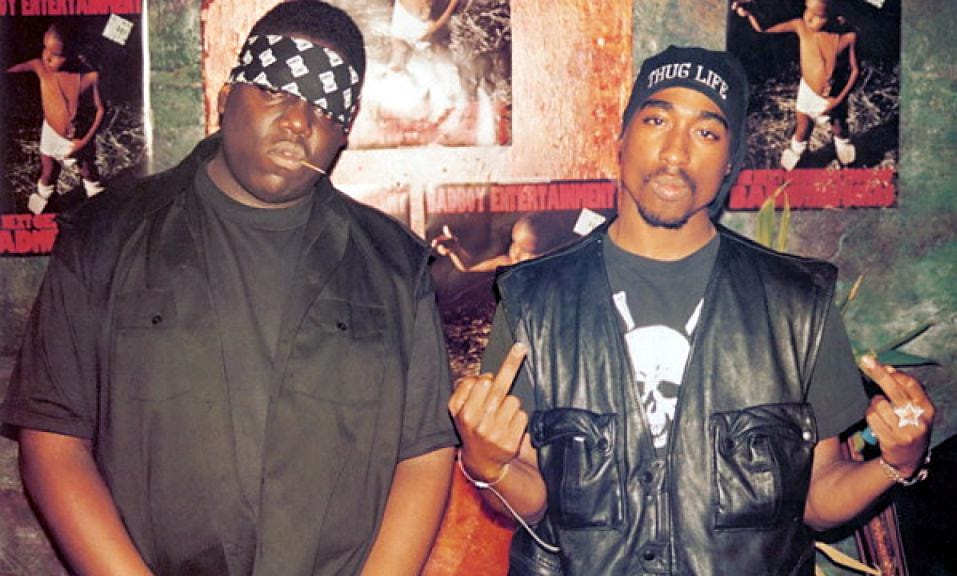RANKING HIP-HOP’S DEFINING GENERATIONS
On July 6th, exactly one week after the most popular rapper of the decade, Drake, released his most recent №1 album, Scorpion, Future proved why he’s the most consistent rapper of the 2010s by releasing Beast Mode 2, the rapper’s 17th project since 2012 — a catalog that includes six studio albums, two joint projects, and nine mixtapes.
While Drake, Kendrick, and J. Cole are considered the three-headed monster of hip-hop’s reigning generation, we may have to make room for Future. Together, they are the defining rappers of the ’10s, and we’ve reached a point where it’s worth discussing whether they’re one of the greatest generations in hip-hop history.
A new hip-hop generation sprouts up every few years, so the best way to measure each cohort is by dividing them into four-year windows: the rappers who blow up, simultaneously, over a four-year stretch, comprise a generation.
Since the genre catapulted into the mainstream in the mid-’80s, hip-hop has seen six generations come through rap’s revolving door.
Classes of 1984–87: Rakim, LL Cool J, Run, Slick Rick, Big Daddy Kane, Chuck D, KRS-One, Eazy-E and Ice Cube
Classes of 1992–95: Snoop Dogg, Nas, The Notorious B.I.G, 2Pac, Scarface, and Raekwon
Classes of 1996–99: Jay-Z, Andre 3000, DMX, Eminem, Ludacris, Ja Rule, Big Pun, Lauryn Hill, and Fat Joe
Classes of 2003–06: Lil Wayne, Kanye West, T.I., 50 Cent, Young Jeezy, Rick Ross, and Lupe Fiasco
Classes of 2009–12: Drake, Kendrick Lamar, J. Cole, Future, Nicki Minaj, A$AP Rocky, Big Sean, and 2 Chainz
Classes of 2013–16: Chance the Rapper, Young Thug, Lil Uzi Vert, Travis Scott, Vince Staples, 21 Savage, Kodak Black, Quavo, and Offset
Let’s rank them.
6. Classes of 2013–16
Reign: TBD
Roster: Chance the Rapper, Young Thug, Lil Uzi Vert, Travis Scott, Vince Staples, 21 Savage, Kodak Black, Quavo, and Offset

Hip-hop’s youngest generation established itself in 2013, by way of Chance the Rapper, Young Thug, and the Migos’ simultaneous ascent. By 2015, Staples and Scott positioned themselves as potential superstars and then, the following year, three members of XXL’s 2016 Freshman Class — Uzi, Kodak, and 21 — charted the course for their successors. And yet, in 2018, these Millennials are still waiting their turn, pacing the sidelines as the Drake-Kendrick-Cole generation continues its run of dominance.
5. Classes of 1984–87
Reign: 1984–91
Roster: Rakim, LL Cool J, Ice Cube, Eazy-E, Run, Kurtis Blow, Slick Rick, Big Daddy Kane, Chuck D, and KRS-One

After Run DMC pushed hip-hop into the mainstream, on the heels of their successful debut album in 1983, the floodgates opened for a collection of superstar MCs: LL Cool J and Kurtis Blow jostled for the ‘Best Rapper Alive’ title in 1985, before KRS-One and Rakim followed suit in ’86 and ’87. In the last two years of hip-hop’s first decade of dominance, the arrival of two supergroups — Public Enemy and N.W.A. — produced three of the decades defining wordsmiths: Chuck D, Ice Cube, and Eazy-E. These three, along with Slick Rick and Big Daddy Kane, laid the groundwork for the next decade, which would cement itself as hip-hop’s most iconic generation.
4. Classes of 2003–06
Reign: 2004–2011
Roster: Lil Wayne, Kanye West, T.I., 50 Cent, Young Jeezy, Rick Ross, and Lupe Fiasco

3. Classes of 1996–99
Reign: 1998–03
Roster: Jay-Z, Eminem, Andre 3000, DMX, Ludacris, Ja Rule, Big Pun, Lauryn Hill, and Fat Joe
In 1997, following the back-to-back deaths of ‘Pac and Big, hip-hop’s throne was vacant. The favorites to fill the void — Nas and Jay-Z — underwhelmed with their sophomore albums, which gave the two-headed monster over at Bad Boy, P. Diddy and Ma$e, a clear lane to power. Despite topping the charts with their respective debut albums, the Diddy-Ma$e tandem lacked lasting power, making 1998 a flagship year in hip-hop’s transition toward the post-Biggie/Pac generation. That summer, DMX transformed into an overnight sensation with his debut album, It’s Dark and Hell is Hot, Jay-Z cemented himself as a crossover star with his first hit album, Vol 2…In My Lifetime, and OutKast announced the South was here to stay with Aquemini. Then, over the next four years (1999–02), Jay-Z and Eminem would occupy a plane above the rest of the rap game, as the duo became the first co-Kings since Biggie and ‘Pac.
2. Classes of 2009–12
Reign: 2012-Present
Roster: Drake, Kendrick Lamar, J. Cole, Future, Nicki Minaj, A$AP Rocky, Big Sean, Meek Mill, and 2 Chainz

Hip-hop’s current ruling class planted its flag in 2011: A pair of rising stars became the biggest rappers alive (Drake and Nicki), the two hottest up-and-comers released career-altering projects (Kendrick and A$AP), three underground MCs made waves with buzz-worthy mixtapes (2 Chainz, Future, and Meek), and the proteges of Jay-Z (J. Cole) and Kanye (Big Sean) dropped their debut albums. Two years later, in 2013, the group wrestled the throne away from the Kanye-Wayne generation, for good, as Drake released then-the biggest album of his career (NWTS), Kendrick basked in the post-GKMCpraise, and J. Cole’s Born Sinner outsold Kanye’s Yeezus. We’re currently in Year 7 of their reign, which is the second-longest stretch a hip-hop generation has been in power — trailing the eight-year runs by the classes of 1984–87 and 2003–06.
1. Classes of 1992–95
Reign: 1992–97
Roster: The Notorious B.I.G, 2Pac, Nas, Snoop Dogg, Scarface, Raekwon, Redman, Method Man, Ghostface Killah, and Common
When it comes to talent and coinciding peaks, no hip-hop generation has reached the heights of the collection of rappers who ascended to superstardom from 1992 to 1995. After experiencing their respective breakthroughs in ’92 and ’93, this defining generation peaked, simultaneously, from 1994 to 1996. It’s the greatest three-year stretch in rap history, which saw the release of seven of twenty-greatest hip-hop albums ever: Nas’ Illmatic (‘94), Biggie’s Ready to Die (‘94), Scarface’s The Diary (‘94), Raekwon’s Only Built 4 Cuban Linx (‘95), 2 Pac’s Me Against the World (‘95), All Eyez on Me (‘96), and The Don Killuminati: 7 Day Theory (‘96). It’s safe to say we’ll never see a generation so iconic.









